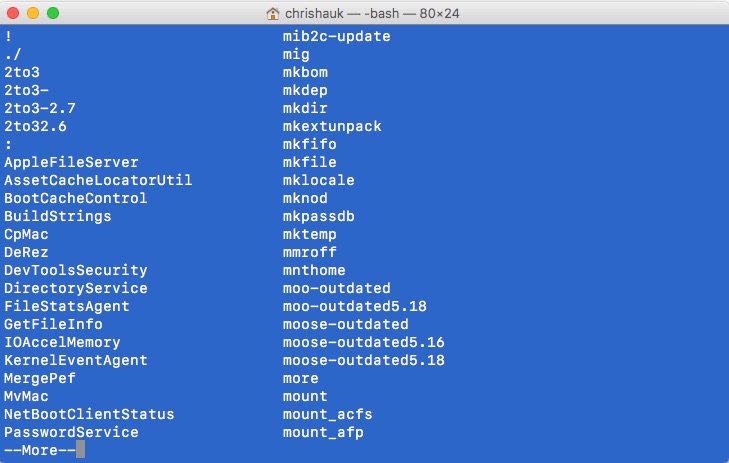

- #MAC TERMINAL DIRECTORY COMMANDS HOW TO#
- #MAC TERMINAL DIRECTORY COMMANDS PDF#
- #MAC TERMINAL DIRECTORY COMMANDS FREE#
#MAC TERMINAL DIRECTORY COMMANDS FREE#
If you want the RAM memory to be cleaned automatically and regularly, use the free app Memory Cleaner.

To clean RAM Memory with a Terminal use this command: It causes a problem in RAM memory, where all kinds of caches that accelerate the launch of the program are stored. Mac users are faced with a problem, when their memory is packed with an inactive stack of already closed apps.
#MAC TERMINAL DIRECTORY COMMANDS PDF#
For example, to change the default format to PDF, the commandĭefaults write type PDF 4. Replace the word “expansion” to three-letter abbreviation of your chosen format. To select the format (JPEG, GIF, PDF) run the command:ĭefaults write type extension MacOS saves screenshots in PNG format by default. However, not all programs for image viewing can open these files. PNG is a file format characterized by high image quality and a small file size. You can also use a special free app Funter to show, hide and operate hidden files on macOS operating system. If you need to view hidden files on a Mac use the command:ĭefaults write AppleShowAllFiles TRUE killall Finder It says that they are either too important and need to be protected, or they are too unnecessary to disturb you. They are system files and caches that Apple keeps invisible. There are files and folders that are hidden from your eyes. Believe it or not, the files you see on your desktop are not all the files on your Mac. Show hidden files in FinderĪll hidden files’ names always begin with a point. If you want to restore the settings use this command:ĭefaults write TargetedClicksCreateTabs -bool FALSE 2. To prevent such attempts in Safari, close the browser and just type in a Terminal window.ĭefaults write TargetedClicksCreateTabs -bool TRUE TOP useful Terminal commands for working on Macįor some inexplicable reason, there are pages linked to be opened in a new window, in spite of a required setting to be opened in a new tab. In the text below you will find some Terminal commands for Mac. The dollar sign ($) in the end and a blinking cursor invite you to enter the first command. When you run it you will see a window with a line of the computer name and the current directory. Mostly, work in Terminal consists of entering the specific text strings and pressing the Return key. Go to Finder → Applications → Utilities or launch it from Launchpad.
#MAC TERMINAL DIRECTORY COMMANDS HOW TO#
The first thing you should to know about Terminal is how to run it. You can make changes to the system, open the settings and include features with the specific commands in Terminal. The Mac Terminal application provides access to the UNIX kernel, the core of the Apple desktop platform. Then you can not do without using the Terminal command line.

Sometime it is necessary to put on another pair of shoes, though, when you need some hidden features that are not available from the GUI. Mac users are not often faced with the necessity to use the command line, as most needs are realized in the system graphical user interface.


 0 kommentar(er)
0 kommentar(er)
